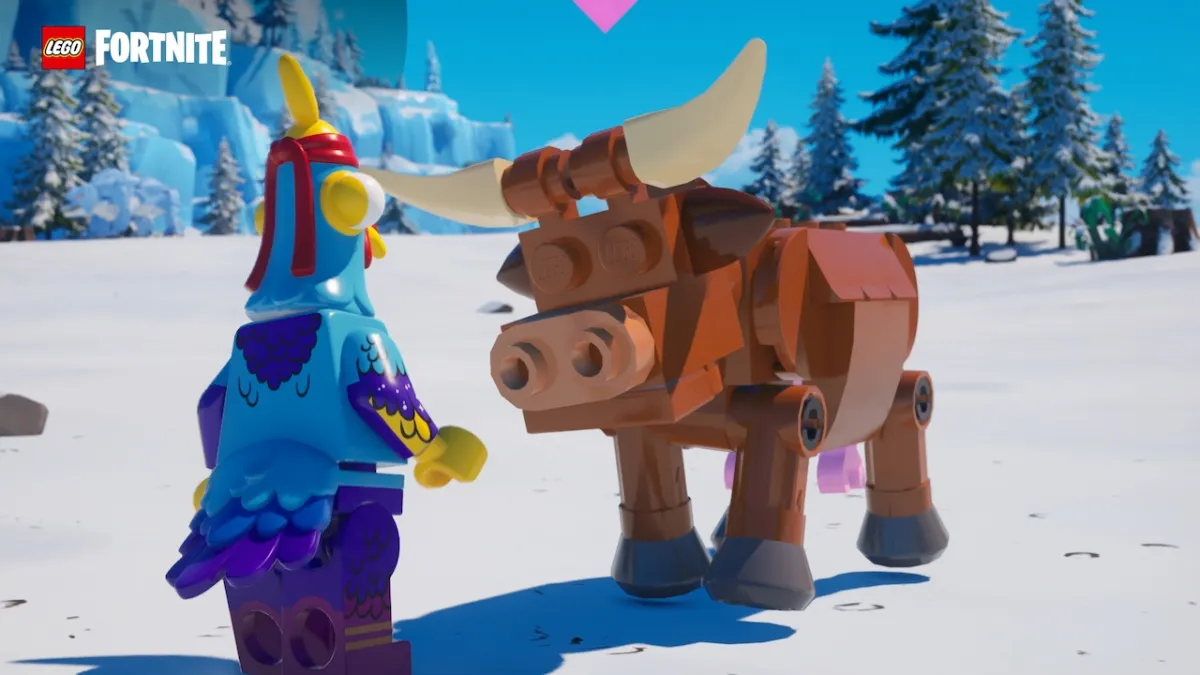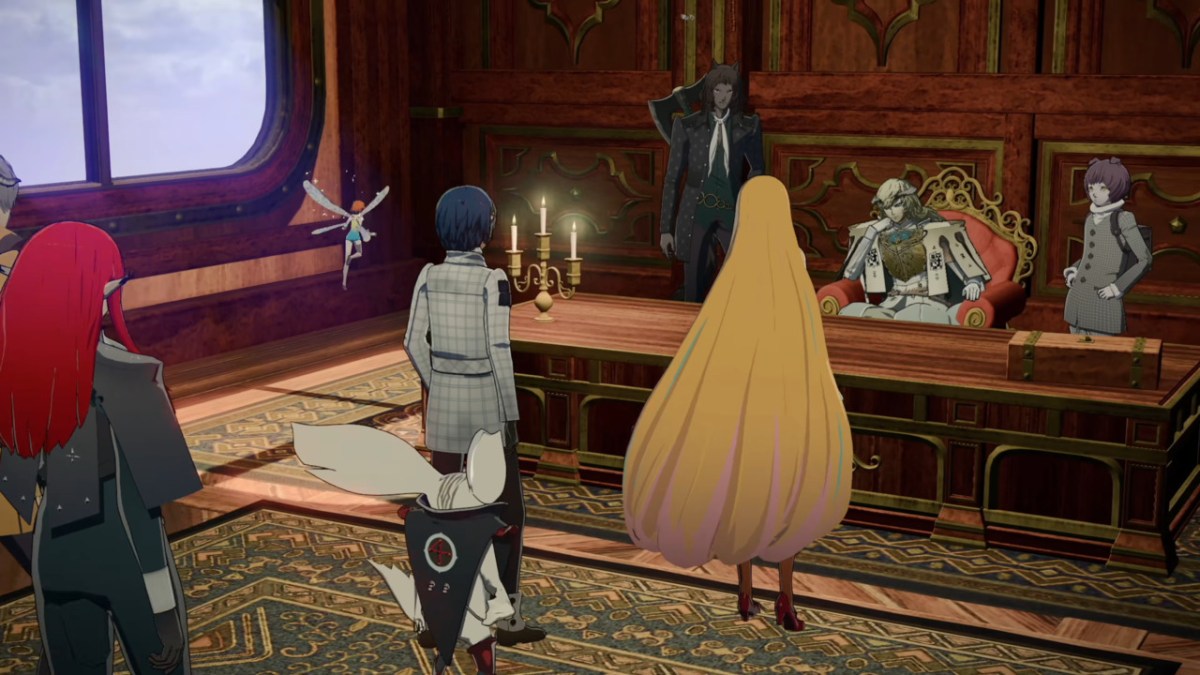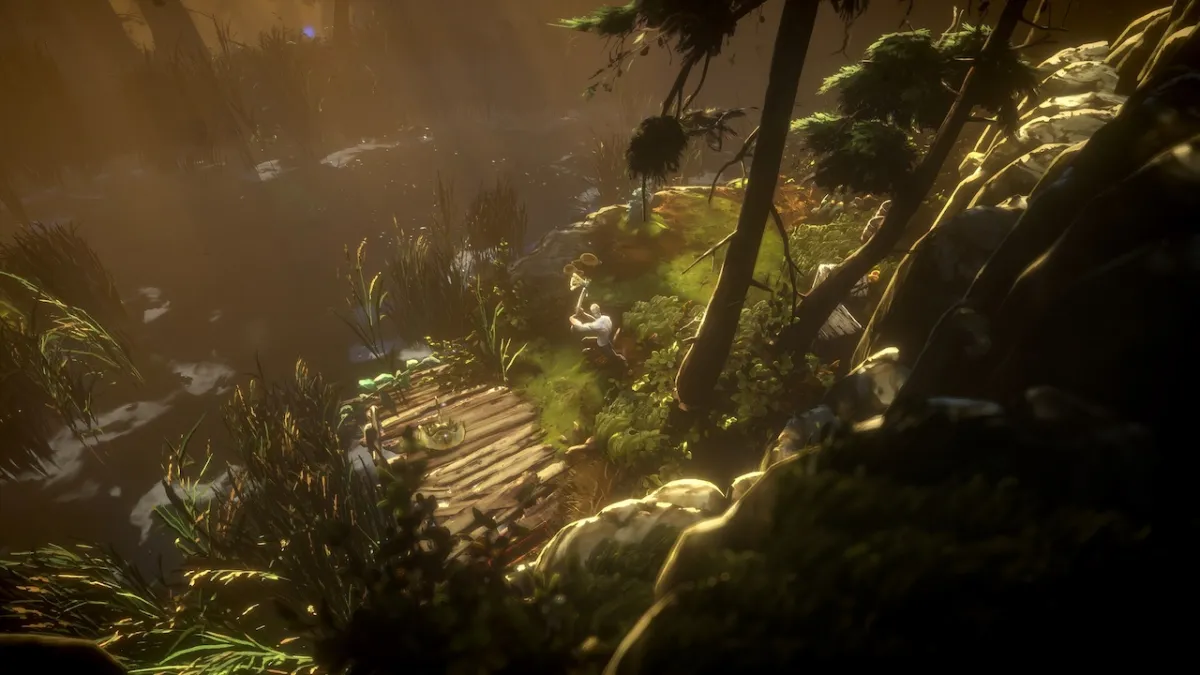Developer: Omega Force
Publisher: Square Enix
Platform: PC [Reviewed], PlayStation 4
Release Date: December 3, 2015 [PC]
Price: $59.99
Dragon Quest Heroes: The World Tree’s Woe and the Blight Below is, like its rambling title, an exercise in almost comic ridiculousness. It meshes a predictable story about the battle between light and darkness suitable for a Saturday morning cartoon with sexual innuendo, cheap puns, and silly accents. The power of friendship is frequently invoked, and you run about saving grandmothers from hordes of roving monsters. If any of these elements existed on their own, they would fall flat. But this is a game saved by its utter refusal to take itself seriously.
Indeed, Dragon Quest: Heroes is best described as charming, hailing back to an earlier age of role-playing games (RPGs), which makes it easier to forgive its many faults. But, unlike most games bearing the Dragon Quest name, Dragon Quest Heroes is not an RPG. It is instead an action-oriented hack’n’slash brawler more akin to Dynasty Warriors than other games in the franchise.
Fortunately, it’s certainly passable as an action game. Like Dynasty Warriors, Dragon Quest Heroes throws you into levels filled with hordes of weak enemies, packed closely enough that a single slash is likely to hit a half-dozen. More powerful enemies roam within the hordes, requiring a slightly more tactical approach. The game features a roster of twelve total heroes (13 with the extra DLC hero), all but four of whom are drawn from previous Dragon Quest games. Each hero has a unique move-set largely composed of combinations of the two attack buttons, and a selection of more powerful spells and abilities. Hacking your way through giant crowds is enjoyable, even if it can sometimes get repetitive.
The combat mechanics, with numerous attacks, spells, dodges and blocks, are deep for this sort of game, but they’re rarely necessary. Most levels, especially early on, can be beaten by mashing the same few attacks over and over again. You can bring four party members into any level, and a quick tap of a button switches player control between them. When not selected by the player, the other three heroes are picked up by the AI, which is unfortunately fairly weak. You can’t expect too much of your party when you’re not in control, but the occasional heal may come your way.
Boss monsters pose a bit more of a challenge, as they tend to have highly damaging attacks and tons of health. They also typically have learnable patterns and weak spots, but the simple strategy of building up each party member’s “tension” meter by attacking, then unleashing their temporary “high tension” mode is usually sufficient. While in high tension, that hero is invulnerable, does more damage, can use spells and abilities without spending mana, and will end their high tension with a super-powerful “coup de grace” attack that deals massive damage in a wide area. As building tension is so vital, much of the game is spent using normal attacks on weak enemies to build tension in order to unleash it on the more powerful enemies and bosses.
The difficulty only truly spikes during levels that require you to protect a person or thing, as these targets can be quickly overrun with the constant stream of monsters coming through portals scattered about. This, at least, gives rise to some strategic choices. Do you hang back and protect them until you’ve defeated every enemy, or run around trying to close the portals but leave your objective undefended? For a game in which one of the two main protagonists is constantly rambling on about devising the perfect stratagem, it’s quite fitting. Some help comes in the form of monster medals, which let you summon defeated monsters to guard certain locations. A few levels also include doors that can be opened or closed to strategically reroute the constant march of baddies, but these are rare.
Indeed, the levels themselves are fairly bland and are often reused. Unlike the wide-open battlefields of Dynasty Warriors, here they’re mostly networks of constrained hallways. The monster models, too, are often repeated with more powerful versions simply getting a new coat of paint. And while these monsters have a fittingly cute aesthetic, their textures are blurry, as are those in the game overall. The graphics here certainly won’t tax most PCs, and look decidedly last generation. This is not to say that the game looks bad. The childish animation style works perfectly for the friendship-and-rainbows storyline, and attacks and spells pop with burst of flame and lightning and dark energies. Coup de grace attacks are especially visually striking, although they tend to drag on a little too long, and the game does not offer the ability to skip them.
The infrequently used voice-work (the dialogue is only partially voiced) is fortunately very-well done, even if the accents of the characters are mostly ethnic stereotypes. The main villain, of course, speaks with a French accent, but various British, Irish, Russian, and Indian accents also join the cast. The dialogue does, unfortunately, tend to be long winded, but the spattering of cheesy humor lightens things up and carries the story. The two main characters, Luceus and Aurora, either of which you can choose to be your main character, constantly bicker with each other over how to approach fights, with Luceus going on longwinded tirades about strategy while Aurora wants to rush in swinging. The party’s tiny ooze companion, Healix, replaces every possible similar sounding word with words like goo, ooze, or slime. And Isla, the red-haired Irish-accented inventor, frequently throws in a bit of sexual innuendo for good measure.
This total ridiculousness, and the simple fun of combat, allows you to look past the repetitiveness of the battles, the poor textures, and the limited character options. With respect to the latter, you do level up and gain skill points that can be used to unlock new abilities or raise statistics, but the spending of them is fairly obvious, and most have a limited impact. Weapon and armor upgrades follow a linear growth trajectory, with most simply being purchased for gold at the shop. Accessories, which offer special bonuses and effects, add a bit more variety, but the itemization is pretty bare.
At any given time, you’ll have access to a single small hub area with your typical shops for weapons, armor, and accessories, and a church where you can save and refill your rechargeable healing stones. The hub’s giver provides numerous little quests, primarily of the “kill X monsters” variety, or requests that you collect a certain number of a certain alchemy ingredient. A few special story side quests do become available towards the end of the game, but these are few. Other quests will take you back to previous story levels to play through under different circumstances. And if you find yourself under-levelled for certain story missions, you can always use the world map to go back to past areas to challenge endless seas of monsters.
Most of the hub interaction feels shallow, and many bits are unnecessarily drawn out. When you refill your healing stones, you have to wait as a short piece of music plays and the on-screen crystal fills. Similarly, when accepting a quest or completing one, a short piece of upbeat music must play while you’re locked out of doing anything else. It’s very reminiscent of very early RPGs, and while charming, it can also get quite annoying if you’re trying to turn in multiple quests. Menus are likewise finicky, and some dialogue can’t be quickly skipped, all culminating in number of constant small annoyances that sap some of the enjoyment from the game.
There’s little to say about the very straightforward storyline, other than it goes on longer than expected. A number of cut scenes break up the action and provide moments of respite from the monster killing. It all wraps up much as one might thing, but after beating the game, there is quite a bit of end-game content and quests, including bosses much more powerful than the storyline boss. Beating these, however, requires a significant time investment and quite a lot of grinding.
The Bottom Line
Overall, Dragon Quest Heroes feels like a perfectly good little game from a generation or two ago. It does nothing especially new or innovative, and features many small annoyances, but it’s still quite a bit of fun for its twenty-five-hour play time. While there is a new-game-plus option, I can’t see myself repeating what is already a repetitive game, but I there were lots exciting and fun moments. The complex combat, the unique characters, and the over-the-top cartoonish-ness and humor let one look past the drawbacks to see Dragon Quest Heroes as the charming little game it is.









